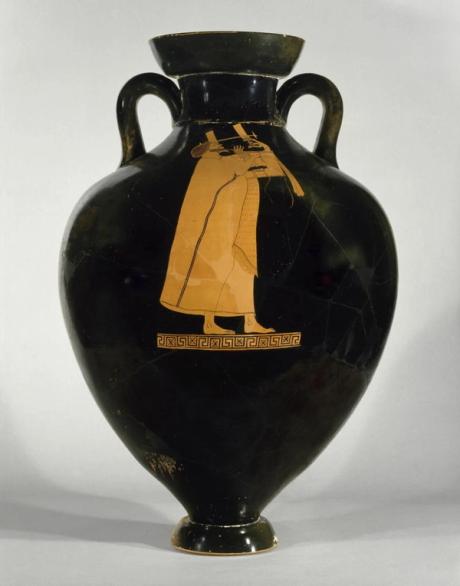
Italy is seeking the return of seven ancient works held by the Louvre that were allegedly looted, including a 5th-century amphora by the so-called Berlin Painter.
Louvre director Laurence des Cars says the work is under investigation, saying The world“I consider that works whose provenance is doubtful are a stain in the collections of the Louvre. It is necessary to examine [these cases] with rigor and lucidity.
In February, Gennaro Sangiuliano, Italy’s culture minister, met with Des Cars to discuss the possible repatriation of the disputed works. Meanwhile, last September, Luigi La Rocca, Director General of Archeology at the Italian Ministry of Culture, presented a list of works from the Louvre collection sought by Italy, including the krater by the painter of Antimenes and a head of Heracles from the ancient Etruscan city of Cervetéri. Des Cars says: “We will enter a new phase this fall, at the end of which we will recommend a position [on the contested works] at the Ministry of Culture.
The world reports that some of the works, acquired between 1982 and 1998, may be linked to convicted antiquities dealers Giacomo Medici and Gianfranco Becchina. In 1995, a treasure trove of Polaroids, documents and antiquities that had passed through the hands of the Medici were discovered in a free port in Geneva, seized by Italian police and presented as evidence in a high-profile looting case in Italy in 2005 Becchina’s photographic archives have been seized. by Swiss authorities in 2001 and handed over to Italy’s main police force, the Carabinieri.
Four pieces from the Louvre collection have been identified by Maurizio Pellegrini and Daniela Rizzo, archaeologists retired from the Italian Ministry of Culture five years ago. These specialists combed through Becchina’s archives and discovered that the Louvre had purchased the krater from the “Painter of Antimenes” for $290,000 from the dealer in 1987.
Another expert who has followed the works of the Louvre is Christos Tsirogiannis – head of research on illicit antiquities (UNESCO chair), Ionian University, Greece – who spotted the amphora of the “Berlin painter” in the Medici archives. The work, which once belonged to oil magnates Nelson and William Hunt, was purchased by the Louvre at an auction in London in 1994.
Tsirogiannis wrote to Cécile Giroire, the director of the Greek, Etruscan and Roman department of the Louvre, earlier this year, asking her to support her application for a grant from the European Research Council (ERC) which would allow her to verify more than 50 000 images of works confiscated from antiquities traffickers. The ERC, however, rejected his candidacy.
“I wrote to Giroire in January, offering to cooperate in the search for the Louvre’s collection of antiquities [in relation to] confiscated drug dealer records; my goal was to research the trafficking networks that supplied the Louvre and other museums across Europe with illicit antiquities. I offered my cooperation for free, subject to a successful application to the European Research Council,” Tsirogiannis said. The Arts Journal. The Louvre had not responded to a request for further comment at the time of writing.
